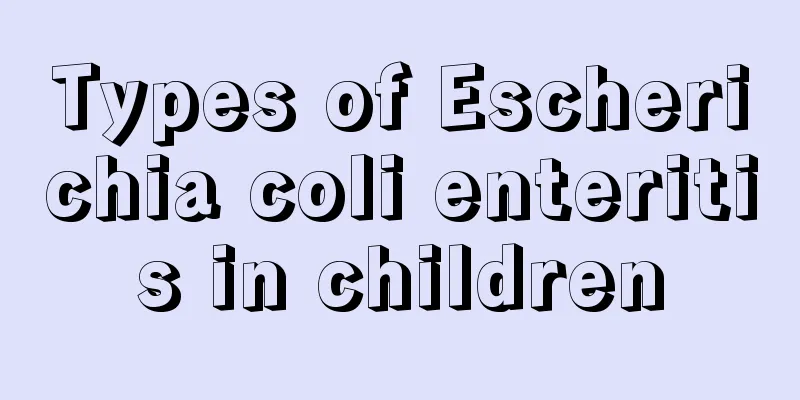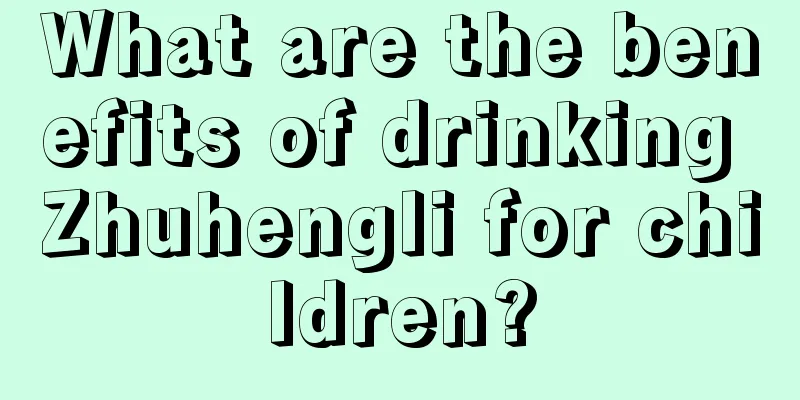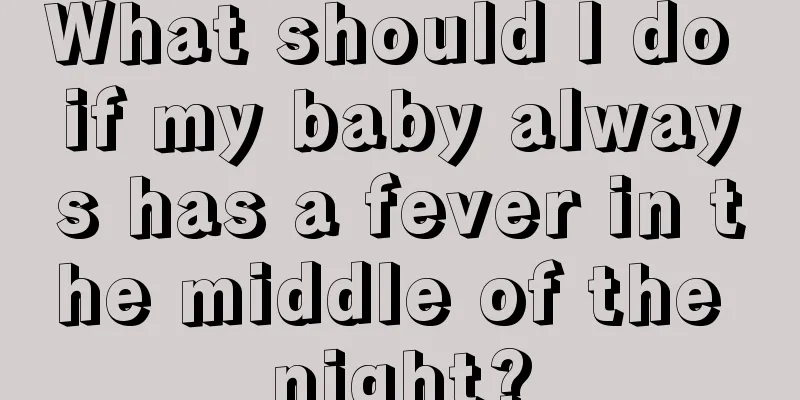Types of Escherichia coli enteritis in children

|
I believe everyone knows about the disease Escherichia coli enteritis in children, right? We may have only seen some manifestations of this disease, but we may not know much about the specific symptoms or what treatments are available. So let us now learn about Escherichia coli enteritis in children. Symptoms and signs Toxigenic Escherichia coli enteritis The incubation period is 1 to 2 days, and the onset is relatively acute. The clinical manifestations are similar to those of cholera, with generally no fever or low fever. The diarrhea is mostly watery, large in volume, and has a fishy odor. Microscopic examination shows no white blood cells and red blood cells, and there is often moderate to severe isotonic or hypotonic dehydration. It is a self-limiting disease with a course of 4 to 7 days. Invasive Escherichia coli enteritis The incubation period is 18-24 hours, with an acute onset, frequent diarrhea, sticky and frozen stools with pus and blood, often accompanied by nausea, vomiting, high fever, abdominal pain and tenesmus, and may cause severe poisoning symptoms or even shock. Hemorrhagic Escherichia coli enteritis The frequency of bowel movements increases, and the stools start out as yellow watery stools, then turn into bloody stools with a peculiar odor. Microscopic examination of the stool reveals a large number of red blood cells, but often no white blood cells. Accompanied by abdominal pain, and in some cases may be accompanied by hemolytic uremic syndrome and thrombocytopenic purpura. Adhesive Escherichia coli enteritis It is more common in infants and young children, with fever, diarrhea, and yellow, stream-like stools. Treatment 1. Pathogen treatment. 2. Replenish fluids and correct electrolyte and acidosis. 3. Reduce intestinal motility and secretion drugs. Through the introduction of the above article, I believe everyone has a certain understanding of small and large colitis? Children's resistance is generally weak and they have almost no resistance to diseases. This requires parents to pay more attention to their children and prevent them from being troubled by diseases such as E. coli enteritis. |
<<: Summary of Children's Cold Medicines
>>: How to pick your baby's nose
Recommend
What are the recipes for three-year-old babies?
A 3-year-old baby is at an important stage of dev...
These methods are effective in treating high muscle tension in babies
Every mother is extremely concerned about the hea...
Is it dangerous to do MRI for babies?
Some children suffer from internal diseases, so t...
What should a one-year-old baby eat if he is iron deficient?
When a one-year-old baby is iron deficient, the b...
Diagnosis and treatment of common pediatric diseases
What parents worry about most when taking care of...
Can I supplement calcium when my baby is coughing?
It is quite common for babies to have colds and c...
What are the symptoms of diarrhea and dehydration in children?
Everyone knows that the baby's physical devel...
Nursing measures for newborns with bleeding umbilicus
When the fetus is in the mother's womb, it gr...
Is it normal for a seven-month-old baby to have a temperature of 373?
If a seven-month-old baby has a body temperature ...
Nursing measures for children with hemp
Urticaria is a very complicated disease. If you s...
What to do if your child can't poop?
Not only adults will suffer from constipation, ma...
What causes intussusception in children?
Many parents will find that their children’s diet...
What are the early symptoms of pneumonia in children?
Many children are prone to symptoms such as colds...
What should I do if my child has a fractured clavicle? These methods to cope
If a child's clavicle is found to be fracture...
What to do when children have toothache? Here are 5 tips
When children are teething, various conditions wi...









